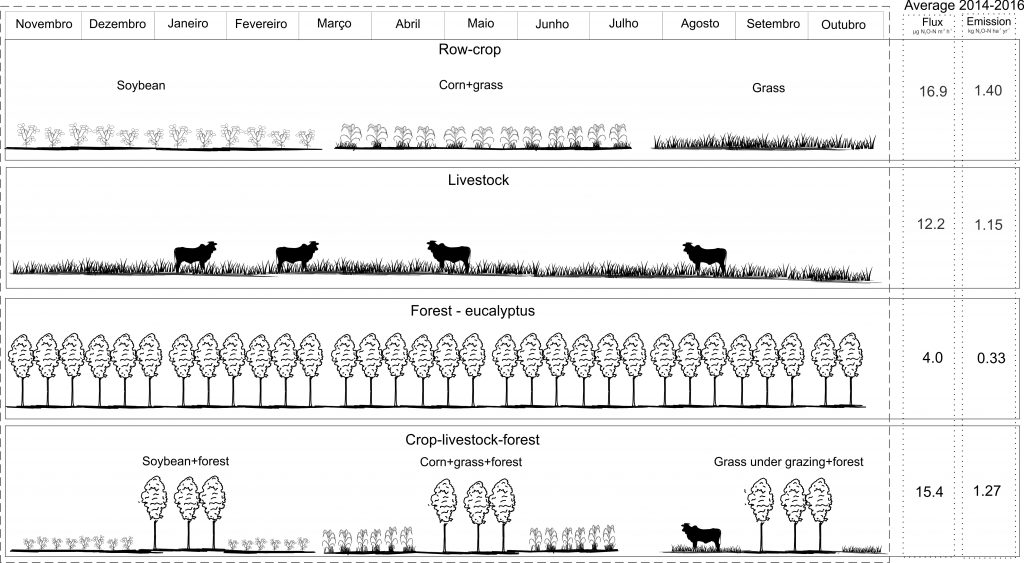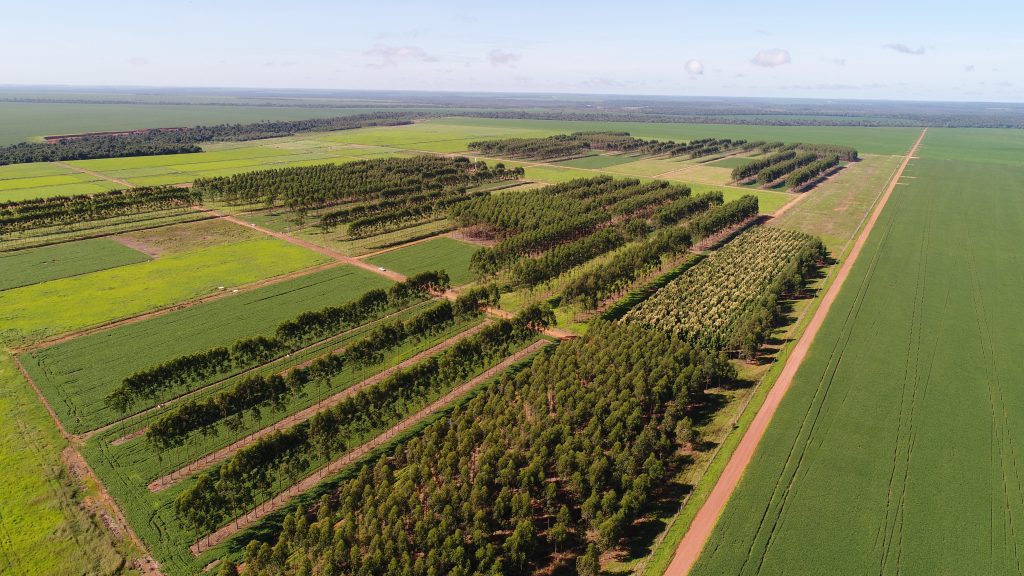Rev. Bras. Ciênc. Solo.2020;44:e0190123.
Nitrous oxide emissions from a tropical Oxisol under monocultures and an integrated system in the Southern Amazon – Brazil
24/abr/2020
DOI: 10.36783/18069657rbcs20190123
Resumo Gráfico

Destaques
The use and management of tropical Oxisols determine the amount of soil N2O emissions.
Soil N2O fluxes were higher during the wet seasons.
N fertilization and soil moisture influenced the soil N2O emissions.
Cumulative N2O emissions were higher in agricultural systems than forest systems.
Even with higher intensification level, integrated system did not lead to more soil N2O emissions than livestock and row-crop.
ABSTRACT
Although agriculture and livestock systems represent important sources of N2O from the soil, they may also aid in emissions mitigation, mainly when integrated systems are taken into account, such as crop-livestock-forest, for food production. This work assessed the soil N2O emissions from a tropical Oxisol under row-crop, livestock, forest monocultures, and an integrated crop-livestock-forest system in the Southern Amazon – Brazil. Soil N2O emissions were measured using static chambers from November 2014 to October 2016 in four soil use systems [row-crop, livestock, forest, and integrated crop-livestock-forest (CLF)], and in a reference area under native forest fragment. For the whole period, the average of soil N2O fluxes was 16.9, 12.2, and 15.4 µg N2O-N m-2 h-1, to row-crop, livestock, and CLF systems, respectively, all with a similar average among them. The lowest fluxes were observed in the forest system and native forest fragment, with average fluxes of 4.0 and 6.3 µg N2O-N m-2 h-1, respectively, both lower than the agricultural systems. The largest soil N2O fluxes were observed throughout the rainy seasons in the row-crop, livestock, and CLF, mostly after N-fertilizer application to the soil surface or in the planted row. As a consequence, the cumulative emissions were greater in row-crop, livestock, and CLF systems, which in the averages of two cycles emitted respectively 1.40, 1.15, and 1.27 kg N2O-N ha-1 yr-1, all different of the forest system and native forest fragment (0.33 and 0.52 kg N2O-N ha-1 yr-1, respectively). Nitrogen fertilization and soil moisture influenced soil N2O emissions of all systems assessed in the Southern Amazon. The N2O emissions took place after both factors were met, corroborating the hole-in-the-pipe model. Even with more soil use intensification, once in the same area there were three cultures in succession during a year and perennial trees, CLF did not lead to greater N2O emissions from the soil than row-crop and livestock. Thus, CLF represents a good option for N2O mitigation for the edaphic and climatic conditions of the Southern Amazon.
567

